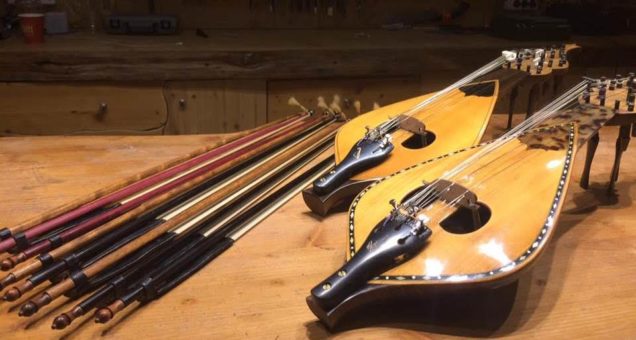If you spend your vacation in Rethymno, you will have the opportunity to visit the Museum of Cretan Lyra, which is located in the town. If you rent a car in Crete, you can go to the mountainous villages of Anogeia, which is situated in a close distance to Rethymno. Anogeia is a traditional village with a strong authentic Cretan character. During the visit in this settlement, you can see people wearing traditional costumes and speaking the Cretan dialect as well as enjoy the great musical tradition with the Cretan instrument lyra. Of course, you can hear the sound of this unique instrument all around Crete, as many taverns offer free performances with Cretan musicians to enjoy it while eating.
The Cretan lyra is the surviving form of the Byzantine lyra, which was used during the Medieval Times in Greece. The lyra is held vertically on the player’s lap, in the same way as a small viol. There are three major types of Cretan lyra. The lyraki is the smallest model and it is identical to the Byzantine lyra. Vrontolyra has a very strong sound and accompanies songs, while the common lyra is the most popular type of this instrument and is combined with violins.
The Byzantine lyra was introduced in 961 A.D., when Crete was reconquered from Arabs by the Byzantine Empire. The lyra was gradually introduced into the island’s culture as a popular element of the Byzantine music and tradition. Until today, the Cretan lyra is an important part of Crete’s tradition and has created a music style you have never heard before.
The lyra spread widely via the Byzantine trade routes that linked Europe, Asia and Africa. In the 11th and 12th centuries, European writers used the terms fiddle and lyra interchangeably when they referred to bowed instruments. In addition to Crete, descendants of the Byzantine lyra have continued to be played in many regions until the present day, such as the Calabrian lyra in Italy, the Gadulka in Bulgaria and the Pontian lyra in Turkey.
Like all types of Greek folk music, the Cretan music is closely related to dance. If you watch a performance with Cretan lyra, it is likely you see also Cretan people dance with their traditional costumes. The best-known Cretan dances that accompany the lyra are syrtos, pentozali and sousta.
Other performances include Cretan music with lyra that accompanies songs with weird and fascinating lyrics. These songs are called mantinades, which have rhyming couplets in subjects, such as love and war. These couplets have their origins in Medieval Cretan poetry and are usually sang in idiomatic Cretan Greek.


